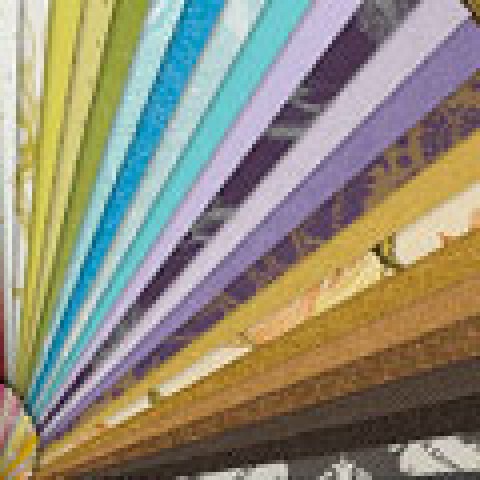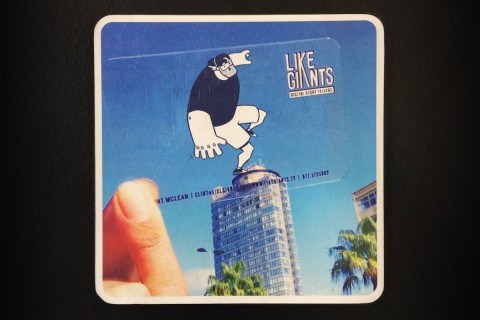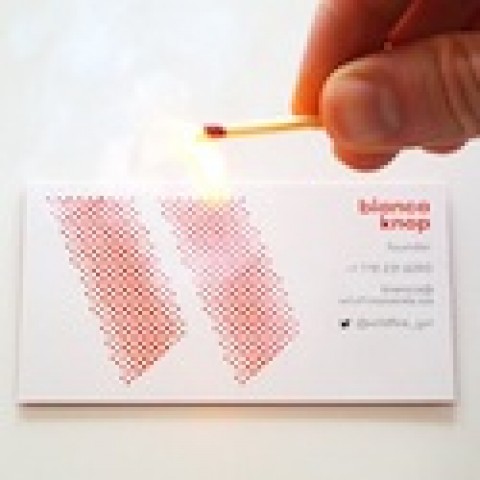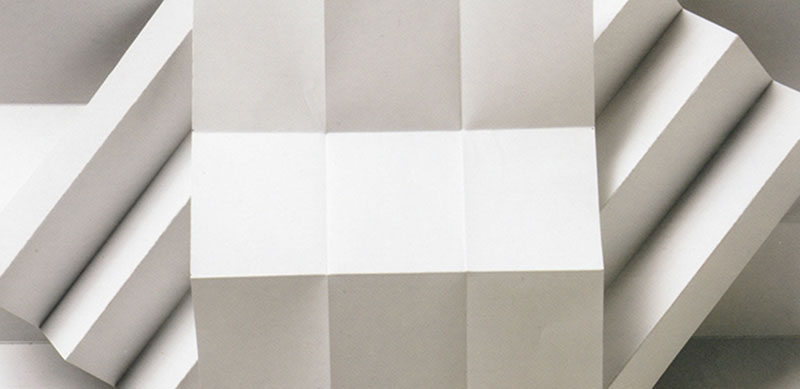
In this follow-up to a classic webinar, Kit Hinrichs and Trish Witkowski answered your questions about how scoring and folding can help designers organize information, afford new creative options, and achieve more successful printed communications.
Kit Hinrichs, founder of Studio Hinrichs, and Trish Witkowski, chief folding fanatic at the online community foldfactory.com, helped us get “In The Groove” during a classic webinar based on the contents of Sappi Fine Paper North America’s fourth edition of “The Standard, Scoring & Folding.”
These two creative and knowledgeable experts showed how scoring and folding can help designers organize information, afford new creative options and achieve more successful printed communication.
Trish did the honors of answering your follow-up questions, and those are presented here for further grooving.
How do w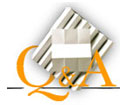
If a fold is patented, you should see a patent number in small type somewhere on the piece. If you suspect a patented piece, but don’t see the credit, it’s worth a quick call to the creator (if you know who did it) to be sure. You can also look up the patent number at www.uspto.gov, search www.google.com/patents, or get updates on new patents using www.freshpatents.com.
What production cost/timing issues can you anticipate to use a patented fold such as PopOut map? Are they patented for resale only or all types of reproduction including self-promotion?
They’re all different. For example, PopOut maps are patented for resale only, but the company works directly with end users as well as with agencies on its PopOut branding custom projects, and they handle the production on every custom project. Production and delivery time for the custom PopOuts are five to seven weeks from approval of proofs. They can deliver within four to five weeks on a rush run. Structural Graphics (The Flapper, The Book Cube, etc.) has multiple patented products with varying delivery times, but they have also developed a RocketShip line of specialty items that can be produced in as few as six days. So, inquire a bit before ruling out a proprietary solution due to a tight schedule.
I’ve seen the Flapper as a proprietary fold from Whitney Woods in the UK called The Interloop Mailer. Are these the same patent? How do they control who uses their folds?
No, these are not the same patent. As a point of reference, Structural Graphics bought Intervisual Communications (the original patent holder) in 2006, and Structural Graphics now owns the two utility patents for the Flapper, which are in force in five countries (United States, United Kingdom, Japan, Korea and Argentina). Structural Graphics’ patents have to do with automated (machine) manufacturing methods for large volume Flapper production.
The Whitney Woods Interloop mailer is based on a United Kingdom patent owned by Graham Shapiro and licensed to Whitney Woods. It doesn’t infringe on Structural Graphics’ United Kingdom patent because of the methodology. However, Shapiro’s patent would not be feasible or cost effective for large quantities (e.g. more than a few thousand), which would require the methodology covered under Structural Graphics’ patents.
With regard to controlling who uses the patent, when IP rights are respected, patent holders control who uses their IP through licensing agreements. That said, not all parties respect patent laws, or copyright laws for that matter, and it’s an expensive and difficult challenge for patent holders to protect their intellectual property in those instances.
Is the swinger fold a patented fold?
The swinger fold is not patented. It is free to use, so fold away!
Any insight on the process of patenting new folds/dieline?
I can tell you that it’s very expensive. There are utility patents that patent the process of creating the piece and design patents that patent the actual design/construction of the piece. Utility patents are very expensive, but tightly defined, which makes them easier to defend in court. Design patents are cheaper, but also easier for people to work around and harder to defend. If you have something really unique and special and marketable, and you have the funds to patent and market your product, I’d say go for it, but it’s very hard to control and watchdog what’s being done around the world. You’d also have to be willing to spend the money to go after parties who violate your patent.
On the bound-in folded samples in The Standard, do the letters inside refer to compensation panels? (The A, B, C, etc.) Wasn’t sure what they referred to.
Good question – the letters on the folded samples indicate folding sequence. The technique is commonly used by printers; and if you apply it correctly, no one will confuse your folding intent. All you have to do is fold your piece, then unfold it and lay it out flat. Make the first fold and surfaces of the two panels that touch should have the letter “A” on them. Make the next fold, and label the panels that touch with “B.” Follow the process with C, D, E, etc., until the piece is folded. If you’ve done it correctly, you should be able to unfold it and hand it to someone and watch him or her fold it right back up.
What paper weight do you suggest for a poster that folds from a 20X30 down to a 6X9?
Not knowing the folding style, it’s a little difficult to recommend, but definitely a text weight. I’d probably start at 60 lb. and see what that looks and feels like, and work with your printer to make the final choice.
Trish, you mentioned some guidelines with regard to when a folded project goes from standard to difficult or specialty. I couldn’t write them down fast enough – will you please repeat?
Sorry for whipping through that. I was talking about the thresholds that one crosses from standard to specialty or increased difficulty.
– A fold longer than 30 inches becomes large format; and if one folded dimension is less than two inches, it’s small format. Both require special machinery.
– Accordions with more than six folds, because most folding machines have six plates. This means anything above six parallel folds will either involve more equipment or hand folding.
– Roll folds with more than five panels, gate folds with a gap of two inches or more, or gates with panels that overlap less than 0.25 inch or with no overlap at all. The panels can nick each other, which increases spoilage and difficulty.
– Very heavy or very light sheets, folds on the diagonal, odd shapes, curved edges—all of these make your project more difficult.
If you suspect something might be out of the ordinary, ask. You might be surprised at what is achievable. A lot of designers assume certain things will be very expensive when they aren’t (and sometimes they are!).
I’d like to know when the best time to start thinking about the fold is. Incorporating it in the brainstorming process. Especially when your output time is shorter than usual 😉
Good question. Consider folding as one of your tools in the toolbox alongside fonts, images, text, paper, etc. I like to have a base set of folds to run through my head (that poster in the back of The Standard is a great start) and try to eliminate a few and narrow it down from there. For me, the way to narrow down the choice is to look at the content first. If there’s a lot of body copy to deal with, you need a folding style that has a logical viewing order. For example, roll folds are bad for lots of copy, because people tend to put copy on each roll in panel and expect the viewer to read it in order, which never happens. If you’re heavy on imagery, accordions are great (but they’re not great for direct mail). Gates are great for their big “reveal.” It’s kind of a feel, unfortunately, but your decision should be part of an overall evaluation, rather than an afterthought.
Can you type out the name of the United States Postal Service (USPS) sizing template, please and where can we find standard manuals?
It’s a USPS First-Class Mail Shape-Based Pricing Template. You can request one from the USPS. They’re free. I would also suggest befriending your local Mailpiece Design Analyst (MDA).
Are folds good for portfolios? Especially for art schools like Art Center… I should say. Are special folds good for books in portfolios for art schools?
Absolutely. I think there should be more folding in portfolios. I’ve seen a lot of student portfolios filled with flat posters, stationery sets, postcards, and maybe one tri-fold. Folding exposes a lot about your skills. Can you allocate content to different fields and create a visual experience that communicates a message? Can you manage the flow of information, deal with readability, and handle technical production issues? Each folding style offers a different user experience, and the ability to choose the right fold, and lay out the content in an appropriate manner is a more sophisticated skill than designing flat pieces. To try to address this issue, I developed a curriculum supplement for graphic arts education programs. It’s called Folding for the Graphic Arts: A Teacher’s Handbook, and it’s available at the foldfactory store.
Where can you get the “FOLDRite” templates?
Thanks for asking. At foldfactory, we offer two ways to get professional custom folding templates. You can purchase our InDesign plug-in FOLDRite Template Master, which allows you to build unlimited templates in InDesign for 85 styles. Just go to the home page and click Get the Plug-in. The plug-in is currently for CS3/CS4, but we’re working on CS5 compatibility right now. You can also use the online version of the template-builder at foldfactory and download one template at a time. All you have to do is buy a point at the foldfactory store, then create a free user account and log-in, click Build Templates, then click Build Templates Online, and you’re up and running. You can save and manage as many templates in your account as you want — we don’t charge you a point until you click the Build button to download the template.
Can you give us that Sappi code again for the free folding template?
Sure! Courtesy of Sappi Fine Paper, if you create a free foldfactory user account and enter the coupon code sappiv4 at registration, you will receive one point in your account, which is good for one custom template download—a $10 value! Click here to get started.
Can samples of the super-cool folds and examples you are showing that aren’t in The Standard book be ordered?
I’m sorry to say that today we don’t offer folded samples of the different styles; however, foldfactory is looking into providing that service because we get that question a lot. For serious inquiries, you can get samples of the proprietary folds by contacting the patent holders.
Was the roll fold cut on diagonal via diecut?
The roll with the diagonal die was definitely diecut, not guillotine cut, since it also has the slit in the cover to tuck in the tip. However, diagonal guillotine cuts are a great, low cost trick to add some oomph to a folded piece.
Is it possible to see the dieline from the Twist fold mailer from the direct mail section?
Yes. If anyone is interested, we do have the Twist fold template from the Sappi promotional mailer. Please contact me at [email protected] to inquire.
How does one go about finding printers that are capable of these more interesting, exotic folds?
Good question. There are some really great specialty finishers in the world, but the question is more often, how many are you going to produce? If you are producing smaller quantities, most of the time the really exotic specialty folds are hand folded, so as long as the printer is skilled enough to help you set up the file correctly, it’s getting printed and hand finished, so no special equipment is necessary.
On the flip side, you want to be sure you’re working with a printer who wants to do that kind of work – it can be very stressful and time consuming for a company that doesn’t normally stray too far from standard fare, and they may feel pressured to try to make it happen for you. So, if you have something really special, I would hunt out the higher-end commercial print shops in your area, as they may have more experience with the unique specialty work. If you’re working in high quantities, contact foldfactory [email protected] and we can put you in touch with the specialty binderies that can automate the process.
 |
To listen …If you missed “In the Groove: Scoring and Folding Creatively,” it’s not too late! Just click here to listen to the full webinar. A special thanks to Sappi for sponsoring this event.
|



